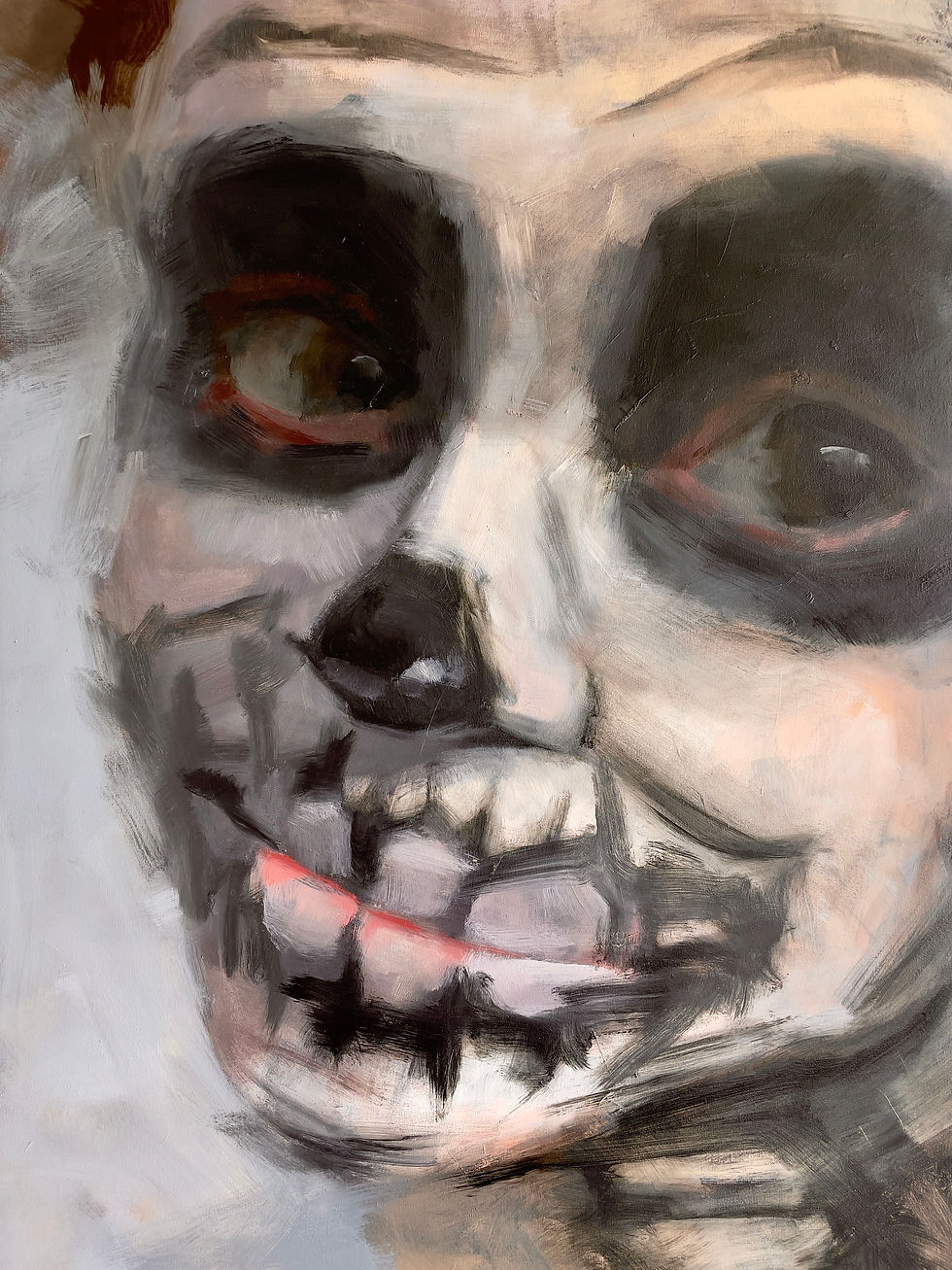Why We Create: On Art, Identity, Solitude and Finding Connection
- John Ruggieri Art
- 15 hours ago
- 3 min read
Interview with John Ruggieri
1) Please tell us something about your background and your art journey so far.
My art journey began at a young age. I’ve always been fascinated by the way visual storytelling can capture emotion and perspective in ways that words often cannot. Over the years, I experimented with various mediums, from traditional drawing and painting to digital modeling and 3D printing.
Recently, my focus has shifted to refining my oil painting practice and exploring themes of identity, transformation, and the intersection of realism and abstraction. Art, for me, is an ongoing process of learning and self-discovery. Each piece feels like a step forward in understanding both my craft and myself.

2) Describe what a normal day looks like as an artist.
My professional life is a balance between solitary creation and community engagement, always beginning with an intentional moment of grounding.
My day starts with yoga, a non-negotiable ritual that prepares both body and mind. Afterward, I review my to-do list and plan the day strategically. The morning and early afternoon are reserved for uninterrupted painting, allowing me to dive deeply into the creative process and bring complex ideas to life.
As natural light fades in the late afternoon, I shift to administrative work: editing videos, creating content for social media, and responding to emails.
Evenings are often devoted to the local creative community, which continuously inspires and energizes me. This might include meetings with art organizations, collaborative studio sessions, dance classes, or attending spoken word and music events.

3) Can you tell us more about the theme in your art and your inspiration?
The central themes in my work revolve around emotion and identity. I’m drawn to the question of how internal experiences can be expressed visually, particularly the tension between what is shared and what remains hidden. Subthemes such as human connection, solitude, cultural heritage, and deconstruction appear frequently in my work, where I use colour, composition, and both figurative and abstract elements to evoke emotion.
My inspiration arises from personal experiences, human interaction, and the natural world. I’m especially inspired by how light and movement convey emotional states. Artists such as Jenny Saville and Egon Schiele have influenced how I approach storytelling and vulnerability in my work.
Ultimately, my aim is to create pieces that invite reflection. I want my art to feel intimate yet universal, offering viewers the chance to recognize fragments of their own experiences within it.
4) How does your art life impact other parts of your life?
Creativity is the core operating force that shapes every area of my life. Whether I’m structuring a complex project or navigating personal challenges, the problem-solving mindset I developed through art guides me.
Creating provides a space to process emotions that are too nuanced or overwhelming for words alone. It acts as an emotional outlet and teaches me to slow down, pay attention, and remain present. This heightened awareness influences my interactions, my choices, and my connection to others and the world around me.

5) Could you share any difficulties and hardships you had to face in life and how or if you managed/overcame them?
Growing up with a hearing impairment taught me the profound loneliness of communication barriers. Words often failed me or arrived distorted, so drawing became my first language. It allowed me to translate the confusion around me and share my inner world with people who could not hear my voice.
What began as a solitary, necessary form of expression evolved into a lifelong pursuit of artistic mastery. Art gave me a way to problem-solve creatively, developing an imaginative mindset I still rely on today.
Whether I face professional obstacles or personal challenges, I approach them with the same creativity and visual thinking I cultivated as a child. For me, creation remains the strongest tool for connection and the clearest path to innovation.
6) Is the artist life lonely? Please share your thoughts and experiences.
The artistic life is defined by constant change and uncertainty, but also by endless possibility. That is the fuel that drives my growth and artistic evolution.
There is solitude, certainly. Art requires space where the outside world fades so inner worlds can unfold. Yet I don’t experience it as loneliness. Through art, I’m connected to a vibrant creative community and to others who share the same impulse to explore, express, and transform.
Art allows us to visualize complexity and externalize the intangible. It becomes both a mirror for self-reflection and a bridge that connects us to others.
Instagram : https://www.instagram.com/johnruggieriart/
Twitter : https://x.com/johnruggieriart








